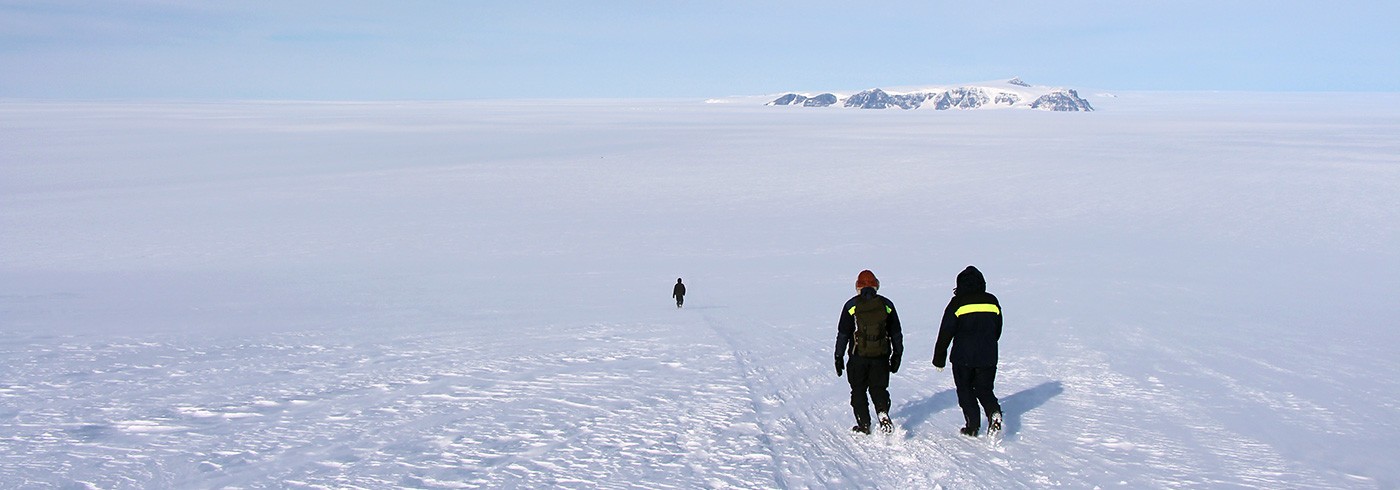Every expedition needs a great leader and we are lucky that we have Henrik Törnberg in that role. Henrik was involved right from the start in helping us with the overall planning and organisation of the MAGIC-DML fieldwork, running up to our current deployment in January-February 2017. He also has day-to-day responsibility for the planning and safety of the expedition while we are here in the field in Antarctica.
So, who is this guy?
Henrik is a keen outdoorsman and he loves all kinds of activities in the wild. He skis, climbs, kayaks and treks; preferably with his wife, children, and his venerable Alaskan husky Krita. Henrik also has a solid education in Earth Sciences from Stockholm University, where he defended a Master of Science thesis on varved lake sediments in a glacial catchment. During his studies, Henrik took courses at the University on Svalbard (UNIS) and it is there that he was first bitten by the polar bug. Henrik then decided to live in Svalbard for several years, working as a popular tour guide in the main town of Longyearbyen. After his years in Svalbard, Henrik was hired as daily manager of the Tarfala research station in northern Sweden. There, he had to master many trades in the extreme alpine environment; including making sure scientific operations were carried out efficiently and safely, measuring glacier mass balance, collecting various other kinds of scientific data, repairing snowmobiles, leading ski mountaineering trips, and emptying latrines! In recent years Henrik has worked as logistics expert and expedition leader at the Swedish Polar Research Secretariat, and it is in this position that we met him as expedition leader of MAGIC-DML.

Henrik Törnberg looking for suitable sample sites in front of Johnsonhogna Peak, Antarctica. Photo: Nat Lifton
What did he do in the lead-up to the expedition?
All Antarctic expeditions take years of careful planning and preparation; you can’t just turn up and expect to start fieldwork in Antarctica! So Henrik has been involved in the planning for the MAGIC-DML fieldwork right from the outset – more years than we care to remember. He has attended numerous planning meetings with us and helped us to think through (and solve) many potential logistical problems. We have lost track of the number of questions we have thrown at him over the last few years and his endless patience in answering them. The list of things Henrik has sorted out for us is a long one, but just to give a flavour of the activities he has been involved in, this includes: ensuring that the Swedish Research Station at Wasa was open and working to support MAGIC-DML, arranging for the correct personnel to be in Antarctica to support the expedition, flight-planning and coordinating all our various ”people movements” from Europe and the USA to Cape Town and onwards to Antarctica, buying and transporting the two Arctic Trucks, spare parts and accessories to Antarctica and getting them from the ship unloading point at the German base Neumayer to Wasa itself, shipping all the MAGIC-DML equipment and supplies to Antarctica, making fuel calculations and ensuring we have the correct amounts and types of fuel where we need them, and buying and testing all the various communications devices we need… the list goes on. Perhaps most importantly he has been the vital link between the Secretariat (as co-coordinators of the logistics of the MAGIC-DML expedition) and ourselves (as scientists) in the build up to the expedition. The most important task by far, was selecting the team of fantastic people who are here with us supporting the fieldwork, making it possible for us to achieve what we set out to do.

Henrik leads from the front. Here he can be seen projecting confidence in the face of adversity, whilst Neil and Nat shiver uncontrollably in the cruel Antarctic cold. Photo: Nat Lifton
What did he do on the expedition?
Probably Henrik`s biggest headache has been the need to balance our requests as scientists to go to particular field sites with the logistical and safety challenges of how to get there, work safely, and then get back again. He has an excellent knowledge of Antarctica and polar travel in general and he has used this to help us plan our transport requirements, to plot the best routes to get there, and how best to allocate our time to the various components of the fieldwork. He has also provided advice on where best to put our field camps to maximise our use of time in the field. Some days he accompanied us into the field to help us find sample sites and other days he volunteered to stay behind in camp to undertake some of the more mundane daily camp duties such as melting snow for food and drink, cooking meals, packing supplies, and washing up. He also kept us updated with reports from Wasa and provided logistical updates from the Secretariat. Last, but certainly not least, he has kept us entertained with his many great stories from previous expeditions.
Thanks Henrik and tack så mycket för allt!


